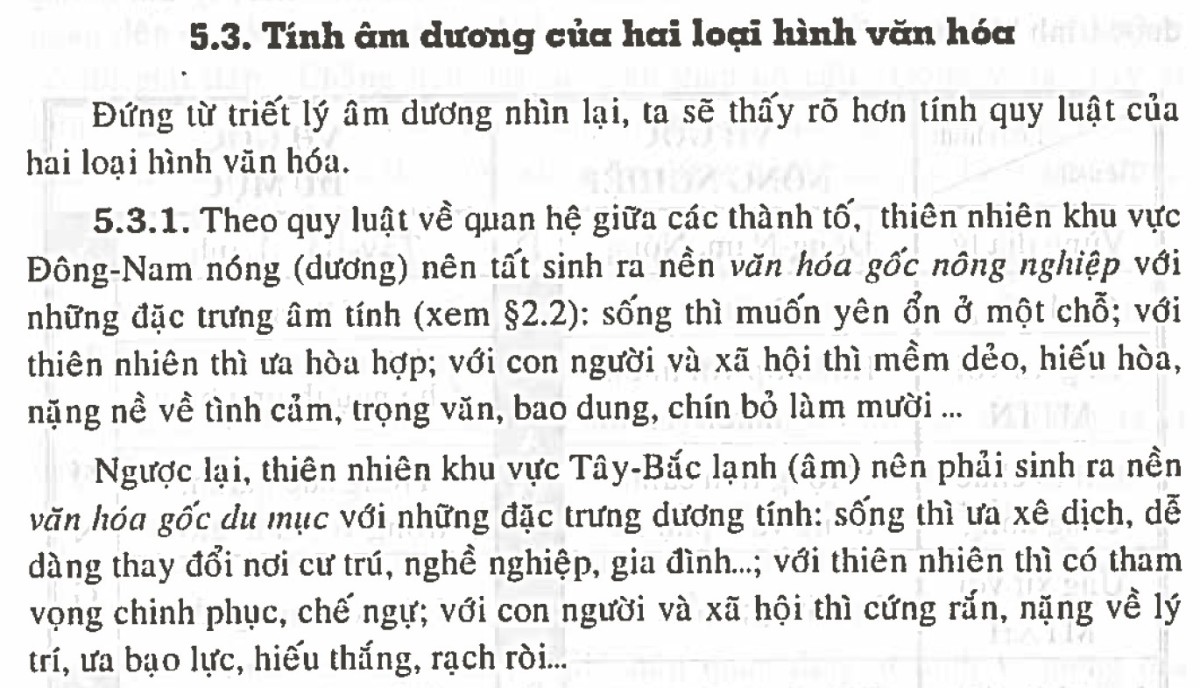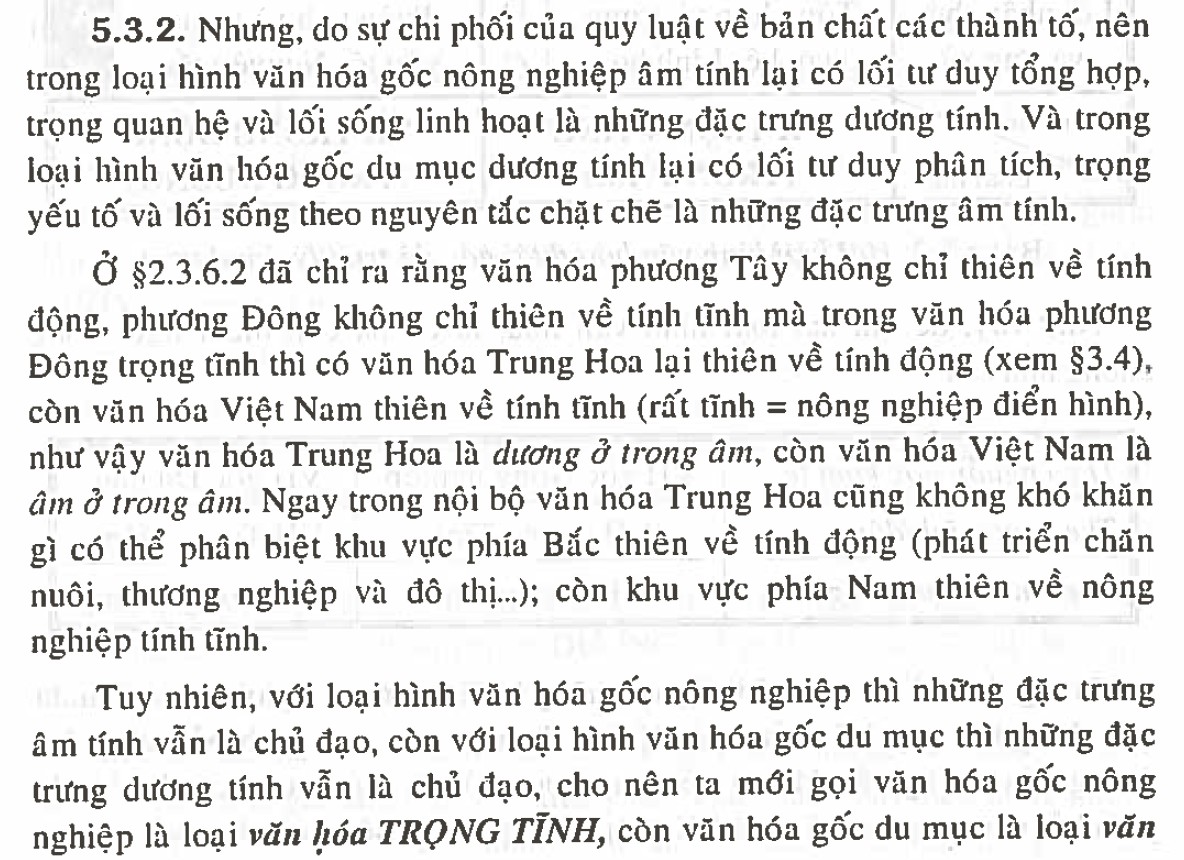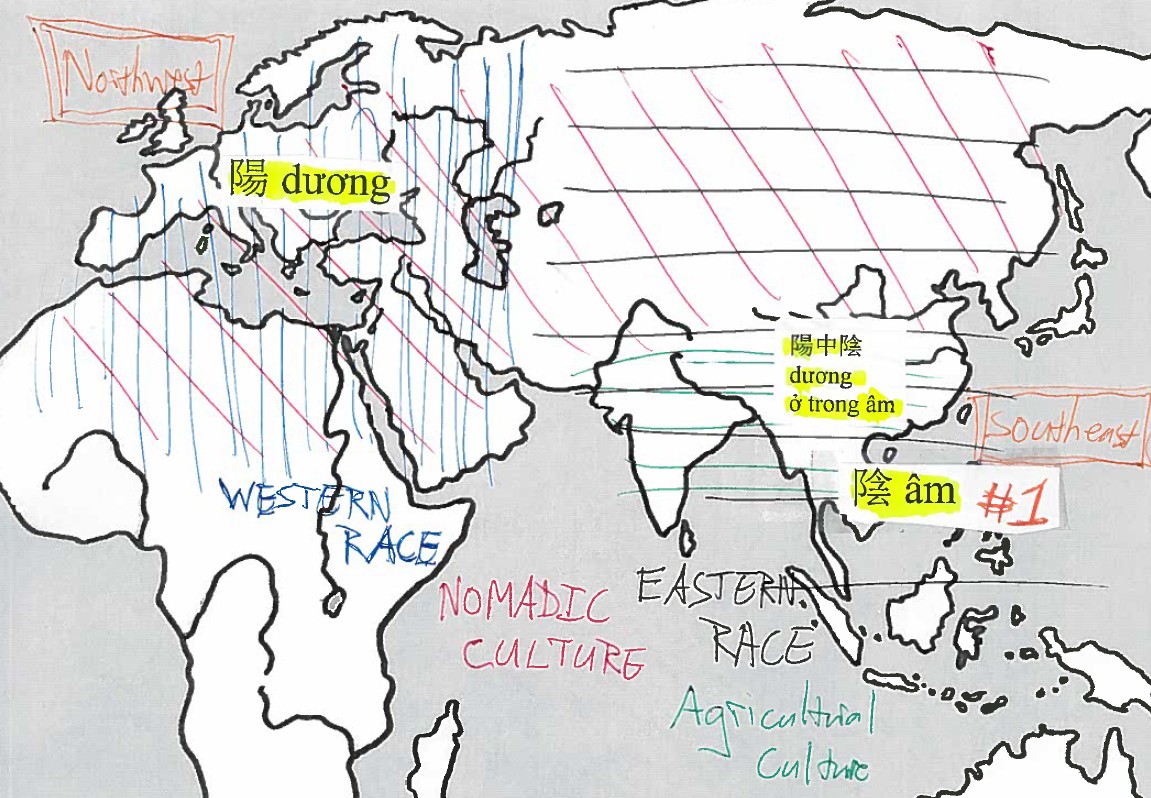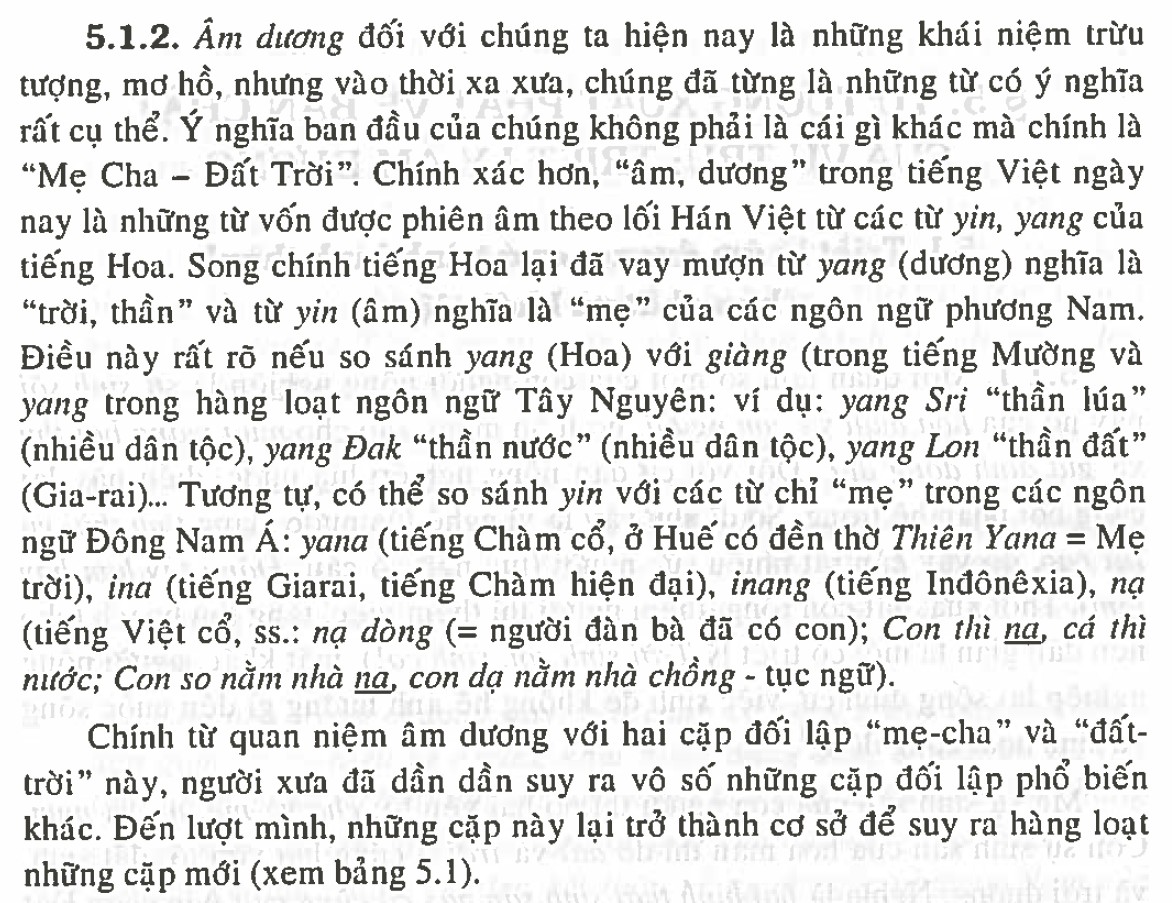Having developed a racialized/essentialist argument that Eurasia is divided into two main racial/cultural groups that can be described through various binary categories – East/West, Southeast/Northwest, agricultural/nomadic, static/dynamic – Trần Ngọc Thêm then presents this view again from the perspective of yin yang (âm duong 陰陽) theory.

He says that following the law governing the relations between the elements of yin and yang, the hot (i.e., yang) natural environment of the Southeast gives rise to an agriculturally-based culture which is marked by the following yin characteristics: there is a desire to live securely in one place (sống thì muốn yên ổn ở một chỗ), as well as a preference to live in harmony with nature (với thiên nhiên thì ưa hòa hợp), and in terms of people and society this culture is flexible, fond of kindness, emphasizes the emotions, values civility, and is tolerant and compromising (với con người và xã hội thì mềm dẻo, hiếu hòa, nặng nề về tình cảm, trọng văn, bao dung, chín bỏ làm mười. . .).
As for the culture of the Northwest, it is the opposite of all of this. The cold (i.e., yin) natural environment of the Northwest gives rise to a nomadic-based culture which is marked by the following yang characteristics: there is a preference to move, and people easily change their place of habitation, their profession, and their family (sống thì ưa xê dịch, dễ dàng thay đổi nơi cư trú, nghề nghiệp, gia đình. . .); there is an ambition to conquer and dominate nature (với thiên nhiên thì có tham vọng chinh phục, chế ngự), and in terms of people and society this culture is rigid, it emphasizes reason/logic, has a preference for violence, likes to be victorious and is direct (với con người và xã hội thì cứng rắn, nặng về lý trí, ưa bạo lực, hiếu thắng, rạch ròi. . .).

Hmmm, it kind of looks like one group here are the “good guys” and the other group are the “bad guys,” doesn’t it?
Actually, according to Trần Ngọc Thêm this cultural division as seen through yin yang theory is more complex than this, because as we saw in the previous post, Trần Ngọc Thêm argues that at least part of the Chinese world has been influenced by nomadic/dynamic culture.
In discussing yin yang theory, Trần Ngọc Thêm makes this point again by arguing that Chinese culture is more dynamic whereas Vietnamese culture is more static (văn hóa Trung Hoa lại thiên về tính động, còn văn hóa Việt Nam thiên về tính tĩnh).
This is important for looking at Chinese and Vietnamese cultures from the perspective of yin yang theory because “static-ness” is yin, whereas “dynamism” is yang.
Therefore, although China and Vietnam are both in the Southeast, according to Trần Ngọc Thêm they are different because China has more yang due to the influence of nomadic/dynamic culture.
A such, Trần Ngọc Thêm argues that Chinese culture is really “yang within yin” (dương ở trong âm) while Vietnamese culture is “yin within yin” (âm ở trong âm), although he also argues that China as a whole is like a continuum that goes from more yang in the north to more yin in the south.

To tie all this together, it is clear from Trần Ngọc Thêm’s depictions that the yin culture of the Southeast represents a much nicer human culture than the yang culture of the Northwest (After all, how can anyone argue that a “rigid” and “violent” culture is preferable to a “flexible” and “compromising” one?), and given that Vietnamese culture is the “yin-est” of them all. . . we are again back to an argument for Việt supremacy.
But why look at all of this from the perspective of yin yang theory anyway?
Well that actually leads to another enormous topic that we don’t have the time or space to deal with here, but essentially Trần Ngọc Thêm does this because he is following in the footsteps of South Vietnamese Catholic philosopher Lương Kim Định who argued that the Yijing was created by the ancestors of the Việt.
Trần Ngọc Thêm is not quite as detailed in his explanation of this as Kim Định was (Kim Định came up with ideas about battles and migrations of people in the past, etc.). Instead, his idea is simply that some of the concepts that we find in the Yijing, such as the interplay between yin and yang, originally developed in “the South” and were later developed further by the Chinese (with their partially nomadic/dynamic/yang culture).

To give a sense of this, Trần Ngọc Thêm argues that while terms like yin and yang might seem abstract to us today, in the past they had a clear meaning.
In particular, Trần Ngọc Thêm says that while the terms âm and dương in Vietnamese today come from the Chinese terms yin and yang, in the distant past the Chinese adopted these terms from Southern languages where yang meant “heaven/sky” or “spirit” and yin meant “mother.”
He then gives examples from languages like Cham, Jarai and Indonesian to support his argument.
I will leave it to linguistics to take up that point, but this argument brings up yet another problem with Trần Ngọc Thêm’s ideas. If such basic elements of his proposed Southeastern culture are preserved among the Cham, Jarai and Indonesians, then why doesn’t the book focus on those peoples and show us this “true” Southeastern culture?
The answer is simple: because that would not demonstrate Việt supremacy, and this books is all about “documenting” Việt supremacy.

